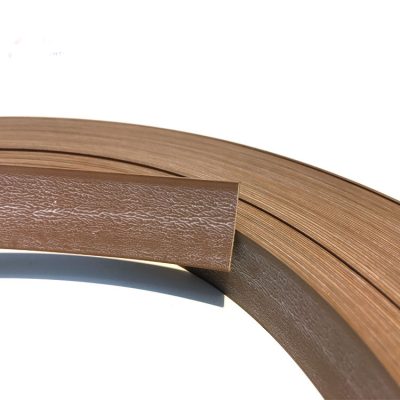The temperature for applying PVC edge banding typically ranges between 180 to 220 degrees Celsius (356 to 428 degrees Fahrenheit). This temperature range is crucial for activating the heat-sensitive adhesive on the back of the PVC edge banding, allowing it to bond securely to the substrate (such as plywood, MDF, or particleboard).
Here are the general steps for applying PVC edge banding with heat activation:
- Prepare the Substrate:
- Ensure that the edge of the substrate is clean, smooth, and free of any dust or debris.
- Cut the PVC Edge Banding:
- Cut the PVC edge banding to the desired length, slightly longer than the edge to be covered.
- Apply Heat:
- Use a hot air gun or an edge banding machine to apply heat to the PVC edge banding. Move the heat source evenly along the length of the edge banding.
- Press the Edge Banding:
- Immediately after applying heat, use a roller or a flat, smooth surface to press the PVC edge banding firmly onto the substrate. Apply even pressure to ensure good adhesion.
- Trim Excess:
- Once the adhesive has set, trim the excess PVC edge banding using a sharp utility knife or a specialized edge banding trimmer.

- Once the adhesive has set, trim the excess PVC edge banding using a sharp utility knife or a specialized edge banding trimmer.
The exact temperature within the recommended range (180 to 220 degrees Celsius) may depend on factors such as the specific PVC edge banding product, the type of substrate, and the equipment used. It’s essential to follow the manufacturer’s instructions for the specific PVC edge banding material you are working with, as they may provide precise temperature recommendations and application guidelines.
Always perform a test on a scrap piece of material before applying the edge banding to your actual project to ensure that the temperature and application process yield the desired results. Additionally, consider factors such as the thickness of the edge banding and the thickness of the substrate when determining the appropriate temperature and application technique.

